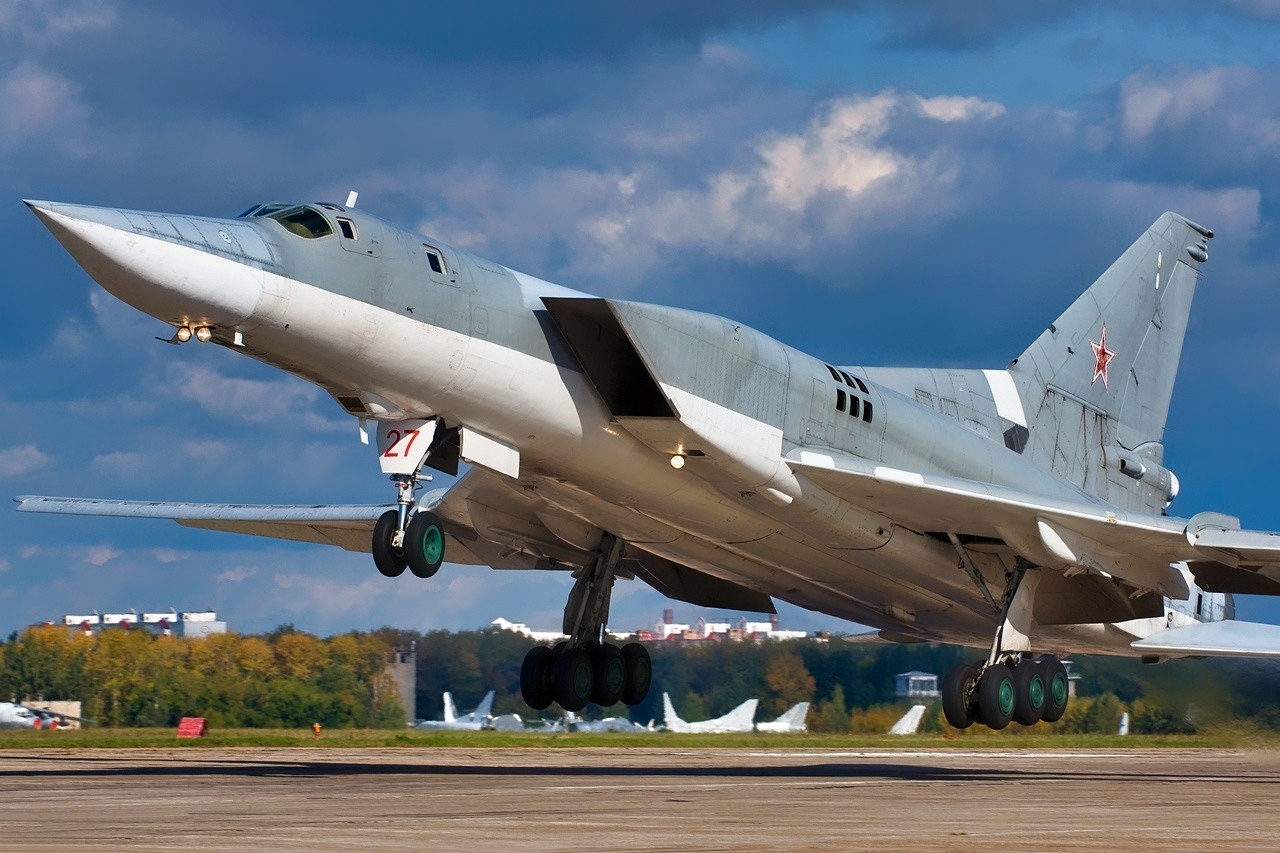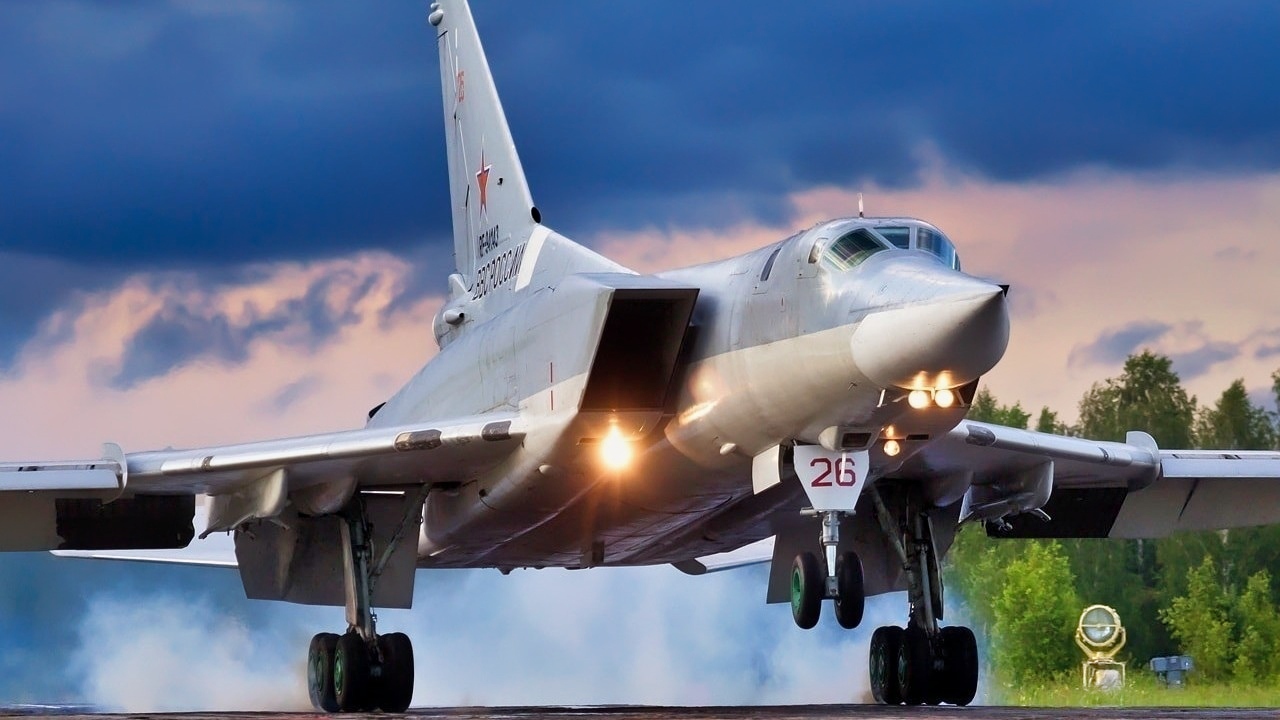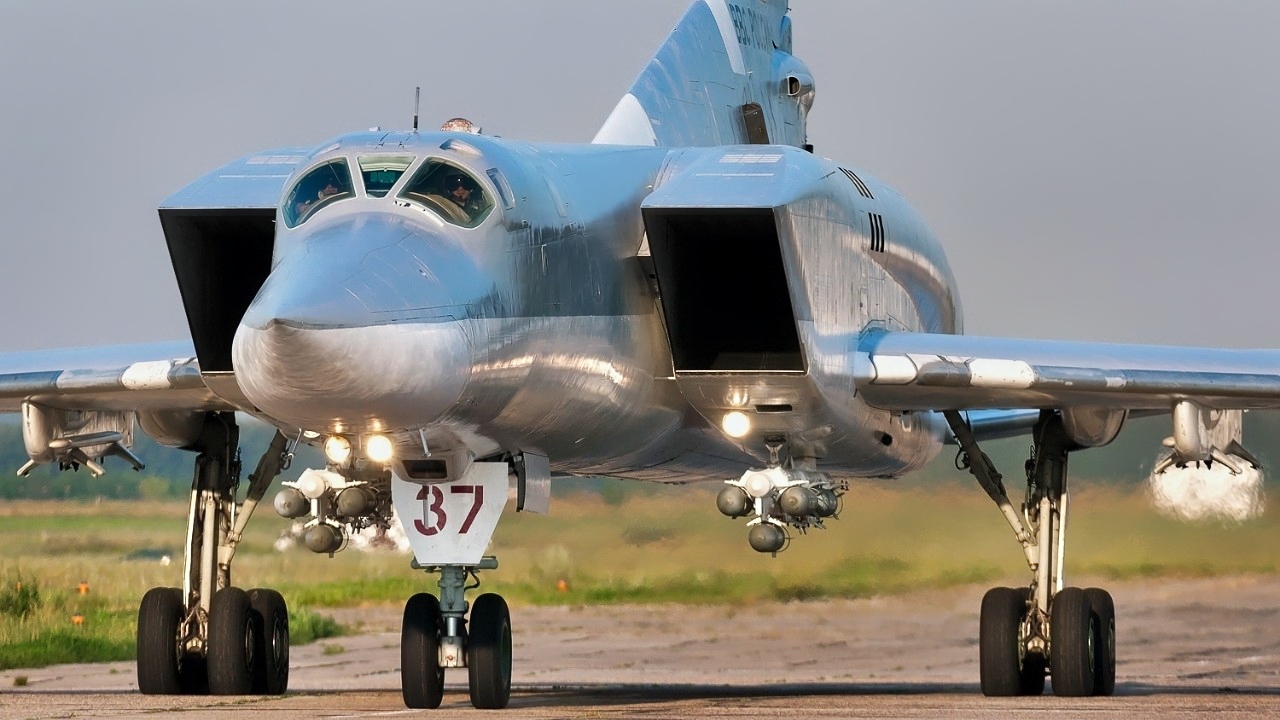Key Points and Summary – The Tu-22M3 Backfire, a supersonic bomber feared during the Cold War, has proven to be a disappointment for Russia in the Ukraine war.
-Its lack of stealth makes it highly vulnerable to modern air defenses, relegating it to a standoff “missile truck” role, firing weapons like the Kh-22 from a distance.

Tu-22M Backfire Bomber from Russia. Image Credit: Creative Commons.

Tu-22M3 Russian Bomber. Image Credit: Creative Commons.
-Ukraine, fearing the bomber, has successfully destroyed multiple Tu-22M3s, both on the ground in daring drone strikes (like “Operation Spider Web”) and in the air with SAMs.
-These “humiliating” losses and its inability to achieve air dominance show the once-feared bomber is not a decisive weapon.
How Effective Has Russia’s Tu-22M3 Backfire Been During the War Against Ukraine?
Russia’s Tupolev Tu-22M3 Backfire is one bomber to fear. It placed the U.S. military on alert during the Cold War as a beast that could deliver nuclear weapons valiantly – an essential leg of the Soviet Union’s nuclear triad. This is a supersonic bomber comparable to the American B-1B Lancer. Russia currently depends on the Tu-22M3 to deliver stand-off missiles at Ukrainian targets.
In fact, Ukraine feared the Tu-22M3 so much that it created an earth-shattering mission to destroy it on the ground. Operation Spider Web caught Russia sleeping with a deadly drone strike that took out perhaps 10 percent of Russia’s bomber fleet on June 1.
Cold War Asset Was Feared
The Tu-22M3 offered a dual-threat option during the Cold War.
It could attack strategic ground targets but also hit U.S. Navy warships. The Backfire was a stalwart asset for the Soviets. The United States needed to plan for it to hit its own nuclear weapons infrastructure and missile sites, potentially.
The Navy learned to keep the possibility of Russian strikes at the forefront of its defense strategy. Carrier strike groups deployed in the European theater could have been attacked at any time.
Like the B-1B Lancer, the Tu-22M3 features a variable-sweep wing.

Tu-22M3 Bomber Russian Air Force. Image Credit: Creative Commons.

Tu-22M3 from Russian Air Force. Image Credit: Creative Commons.
This gives it critical loitering time and the ability to fly faster when approaching a target or trying to escape after a bombing run. The Backfire was first designed during the 1960s. The Tu-22M3 may have been produced too hastily.
Throughout the Cold War, it was afflicted by maintenance troubles that kept it grounded. Mission capable rates were often as low as 30 to 40 percent. In 1983, the Soviets revamped the Tu-22M3 program to improve on these inefficiencies.
Armed to the Gills
Today, the Tu-22M3 can carry a wide variety of cruise missiles and bombs. The weapons payload is 53,000 pounds.
The Backfire can employ the deadly Kh-22 missile that can travel over MACH 4. This can deliver a nuclear warhead, which gives NATO shivers.
The Tu-22M3 can also launch the smaller yet still very rapid Kh-15/AS-16 “Kickback.” This is as fast as KH-22 and can be fired from a rotary launcher quickly and accurately. The Backfire has several conventional bombs that can be dropped, like the FAB series of free-fall munitions.
There is also the KAB series of precision-guided bombs. The Russians also aim to deploy the Kh-47M2 Kinzhal hypersonic weapon on the Tu-22M3.
The Tu-22M3 has used many of these munitions during the war against Ukraine. The Backfire, true to its name, is more of a stand-off platform these days. It cannot successfully navigate modern air defenses and surface-to-air missiles, but its huge payload makes it a worry for Ukraine.

Tu-22M3 Bomber from Russia. Image Credit: Creative Commons.

Russia Tu-22M Bomber. Image Credit: Creative Commons.
The Tu-22M3 Has Suffered Losses at the Hands of the Ukrainians
Russia has around 24 Tu-22M3, but a handful have been destroyed on the ground in missions by Ukraine.
One was knocked out in August 2023 while parked at an air base in the Novgorod Oblast.
In April of this year, another Ukrainian drone strike may have taken out a Tu-22M3 at a Russian air base. An S-200 SAM system has shot down at least one.
One also crashed in April 2024. This happened “in the Siberian Irkutsk region due to an alleged technical malfunction. The pilot was killed in the crash, while four other crew members were forced to eject,” the Kyiv Independent said.
No Stealth; No Dice
The biggest problem with the Tu-22M3 is its lack of stealthiness. The Backfire was meant more for the Cold War and has struggled during the conflict against Ukraine.
It still packs an enormous punch and can deliver missiles that can menace targets against Volodymyr Zelensky’s military. The Tu-22M3 has conducted damage against cities too.
The Ukrainians are well aware of its destructive powers and have made taking out the Backfire as one of their main priorities in the war. Russia has been embarrassed by the Tu-22M3’s difficulties during the war.
The Backfire is more of a missile truck that must stay out of the range of Ukrainian air defenses.
This is not enough to change the balance of power in the war. Vladimir Putin’s bomber fleet has not been a strategic factor against Ukraine. The Backfire’s missiles have done damage, but not enough to convince Ukraine to halt its efforts against Russia.
What Happens Next?
The Backfire is still an airplane to watch, though. The United States has undoubtedly shared its intelligence data it has acquired over the years with Ukraine.
American satellite intel has likely alerted the Ukrainians to times when the Tu-22M3 has been caught outside hangars at air bases. This destruction of the Backfire has humiliated the Russians, who have struggled to maintain any semblance of air dominance over Ukraine.
Russia still has enough Backfires to attack Ukraine. The SAM systems and the Patriot air defenders around Kyiv should be on constant alert from missiles launched by the Backfire.
So far, that layer of defense has proved mostly effective.
The Tu-22M3 still has some kick left in it, but don’t look for it to be decisive in this stalemate. Russia may have found out that its force of non-stealthy bombers has not been effective enough to keep the Ukrainians from crying uncle and ending the war.
About the Author: Brent M. Eastwood
Brent M. Eastwood, PhD is the author of Don’t Turn Your Back On the World: a Conservative Foreign Policy and Humans, Machines, and Data: Future Trends in Warfare plus two other books. Brent was the founder and CEO of a tech firm that predicted world events using artificial intelligence. He served as a legislative fellow for US Senator Tim Scott and advised the senator on defense and foreign policy issues. He has taught at American University, George Washington University, and George Mason University. Brent is a former US Army Infantry officer. He can be followed on X @BMEastwood.
More Military
China’s New J-35 Navy Stealth Fighter Summed Up in 2 Words
China’s ‘Mighty Dragon’ J-20 Air Force Stealth Fighter Summed Up in 2 Words
China Is Trying to Turn the Indo-Pacific Into a Giant U.S. Navy ‘No-Go Zone’
$13 Billion Mistake? USS Gerald R. Ford Is the Navy’s Aircraft Carrier Agony
China’s ‘Thousands of Missiles’ Have a Message for U.S. Navy Aircraft Carriers










